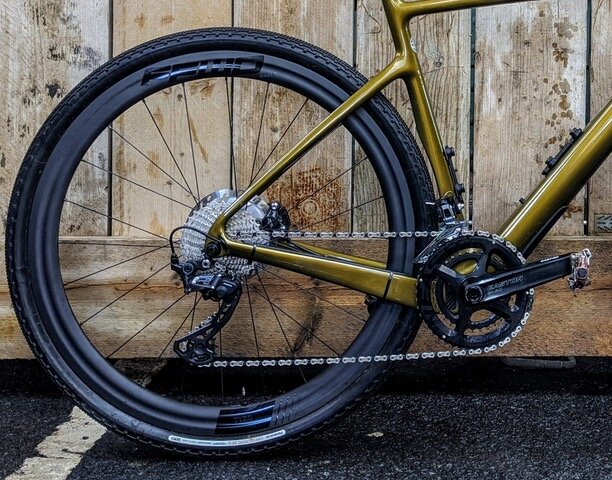In the ever-evolving gravel market it can be difficult to know what to consider when purchasing a set of wheels designed for riding gravel. In this post we’ll talk you through some of the key considerations and what recommendations we make to our customers.
The first point of debate when choosing wheels is the sizing. There are two standards 700c and 650b, the second option offering a slightly smaller wheel diameter allowing for wider tyre clearances. Running wider tyres on your bike will allow greater traction on rough terrain and allow you to run tyres with higher volume. More volume means the ability to run lower pressures, again leading to more grip! So what option is best for you?
700c is arguably a better option for longer distances and riding a mixture of gravel and tarmac. The wider circumference rolls faster and helps you carry more speed which makes a big difference when racing or riding big miles. Currently, there is also wider range of options at 700c particularly when looking for carbon so this may steer you towards the bigger option. Most of our manufacturers produce both wheel standards but with different thru-bolt sizes and hub spacing, it can sometimes limit your choices. Although 650b does offer the potential for wider tyres it’s also possible to fit up to 47mm wide tyres on majority of the custom builds so you’ll still be able to get out of trouble on the gnarly stuff.
650b is geared more towards off-road riding on rough terrain. With the lower tyre pressure and more grip, it inspires more confidence when riding off-road and even when on mountain bike trails it’s rare that you would feel out of your depth. The higher volume tyres also allows heavier riders to run lower psi without the risk of bottoming out and damaging the rim. Finally, if you fit a large set of tyres to the 650b (we go up to 2.1” on some builds) the overall circumference of the wheel/tyre ends up the same as on a 650b. This means that the rolling speeds aren’t affected but and you still get the benefit of added grip.
The next consideration is whether to go carbon or alloy. This is usually dictated by budget but it's an important area to consider. Wheels/tyres arguably have the greatest impact on how the bike rides and the difference between riding an alloy and carbon are huge. Carbon rims are lighter and stiffer so offer up considerably better performance over alloy wheels. 650b carbon wheels accelerate faster and make the handling a lot sharper. Conversely, the 700c carbon wheels usually have a deeper profile allowing you to maintain your speed and again offer up greater acceleration when compared to alloy.
Alloy wheels still offer good performance off-road and are a little more compliant on rough terrain if compared to the same carbon wheels with the same PSI and tyres. That being said you can easily achieve the same ride by dropping the PSI on the carbon option. We feel that the main consideration is the net weight of the wheels and tyres. If you can save 300-500g rolling weight it transforms the ride of the bike and can avoid that sluggish feeling that a set of heavy tyres/wheels gives you.
Overall it’s important to weigh up where you’ll be riding your bike, what sort of distances you’ll be completing and what you’re looking to prioritise in terms of the bikes performance. Different wheel tyre combinations can completely change the performance of a bike on different terrain so make sure you weight up your options for making your next purchase.






